How To Grow Calathea
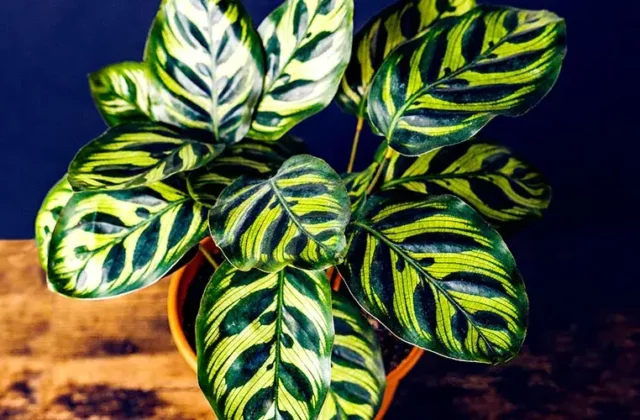
Introduction
Embark on a journey of botanical discovery as we guide you through the steps of how to grow Calathea, offering practical tips and insights to foster the well-being of these exquisite indoor plants. The calathea, commonly referred to as the peacock plant, is a member of the Marantaceae family. Originating from the lush tropical forests of South America, particularly Brazil, the calathea is characterized by a diverse range of foliage in terms of size, shape, and color. Its leaves are positioned at right angles to the stems, and while its flowering is generally subtle, the Calathea crocata stands out with its vibrant orange flowers.
Calathea: An Ideal Indoor Plant Choice
Due to its perennial nature, the calathea thrives when cultivated in pots, planters, and containers, making it well-suited for indoor spaces, greenhouses, or miniature gardens. However, its sensitivity to cold temperatures renders outdoor cultivation impractical.
Cultivating calathea demands specific growing conditions, reflecting its tropical origins. Patience is key, as the plant exhibits slow growth. With meticulous care, which includes providing warmth, maintaining humidity levels, and avoiding drafts and temperature fluctuations, you can cultivate calathea and it can thrive for many years.
Types of Calathea’s
The Calathea genus encompasses approximately 150 species, exhibiting a diverse range of shapes and dimensions. It is commonly mistaken for the closely related Maranta genus. Explore different varieties of Calathea plants and discover how to grow each one to showcase their unique and vibrant foliage. Below is a discussion of some species within the Calathea genus:
2.1 Calathea Orbifolia
Large, round leaves with silver-green stripes that resemble intricate patterns. A stunning choice for indoor spaces.
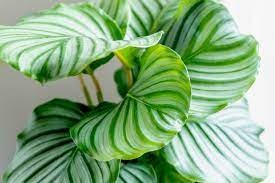
2.2 Calathea Medallion
Striking, round leaves with a central pattern resembling a medallion. Vibrant shades of green with pink hues.
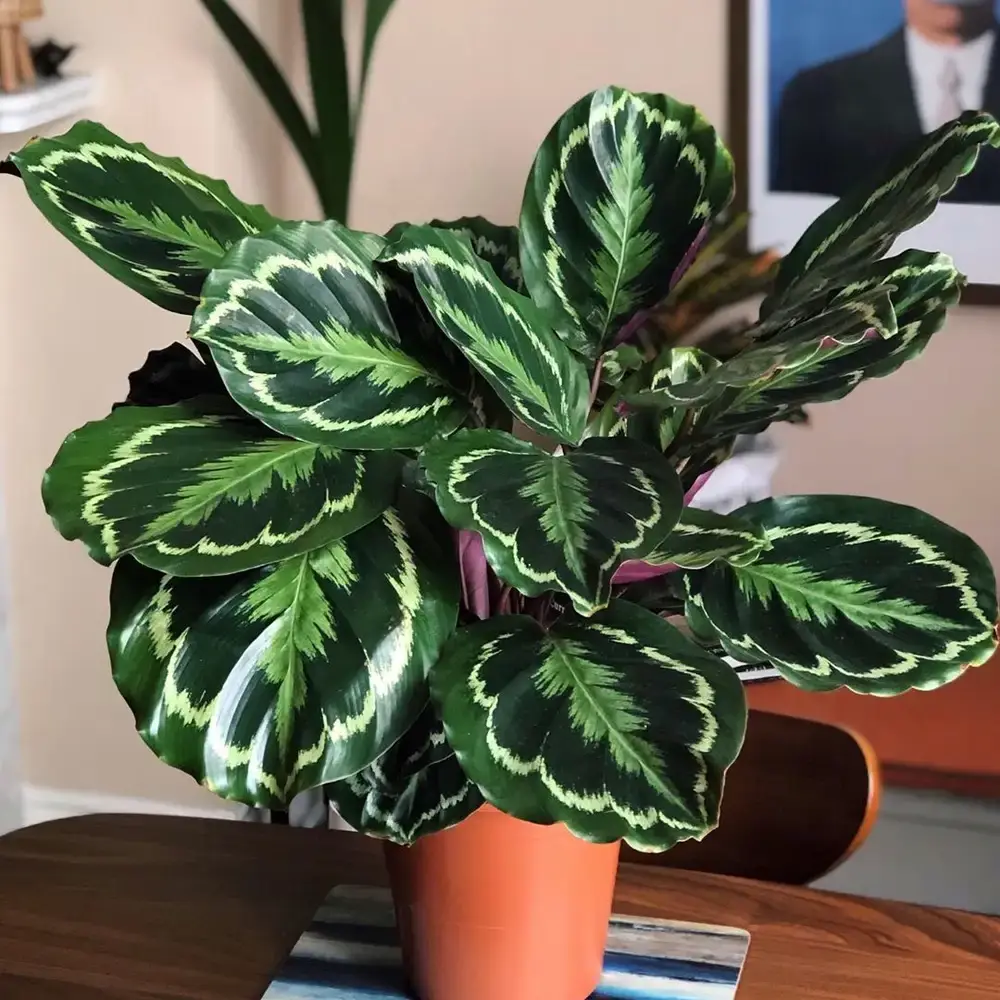
2.3 Calathea Zebrina
Elongated leaves with zebra-like stripes, showcasing a unique pattern. The underside of the leaves has a deep purple hue.
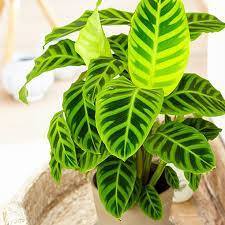
2.4 Calathea Lancifolia
Also known as the Rattlesnake Plant, it has long, lance-shaped leaves with distinctive dark green spots and a purplish underside.
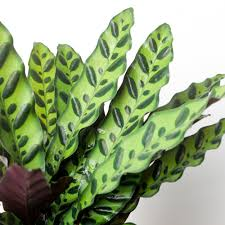
2.5 Calathea Makoyana
Often referred to as the Peacock Plant, it has pale green leaves with intricate patterns resembling peacock feathers.
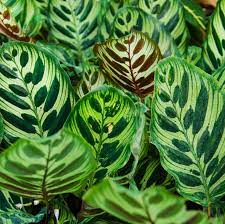
2.6 Calathea Dottie
Dark green, almost black, leaves with pinkish-purple undersides. A captivating variety for those seeking bold contrasts.
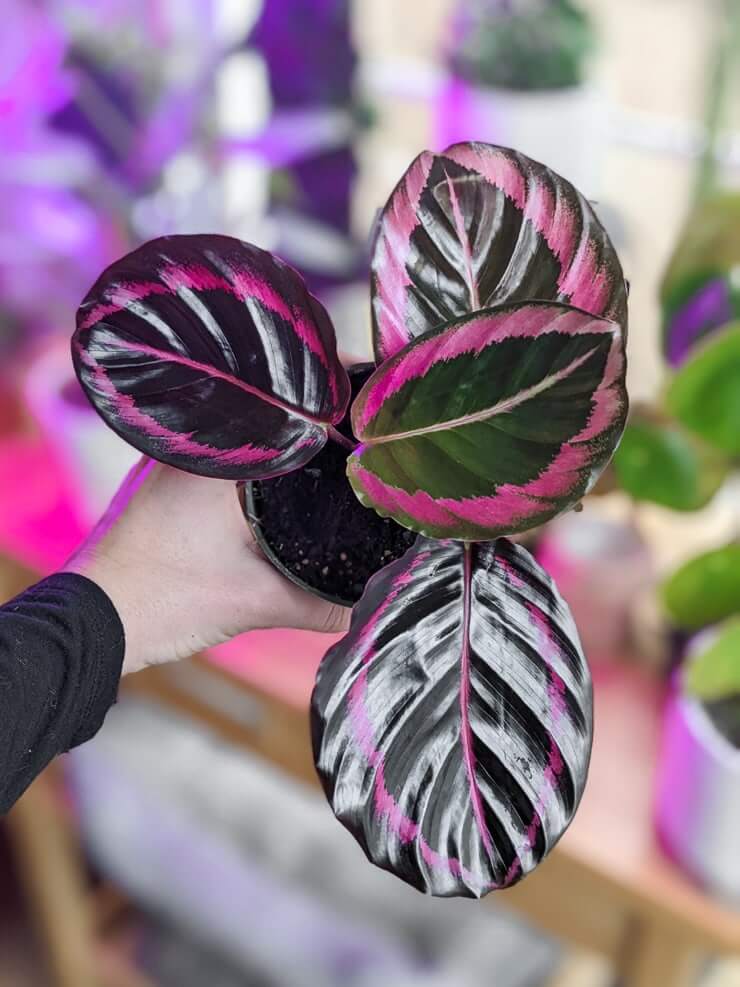
2.7 Calathea White Fusion
A stunning cultivar with white and green variegated leaves, creating an ethereal and almost painterly appearance.
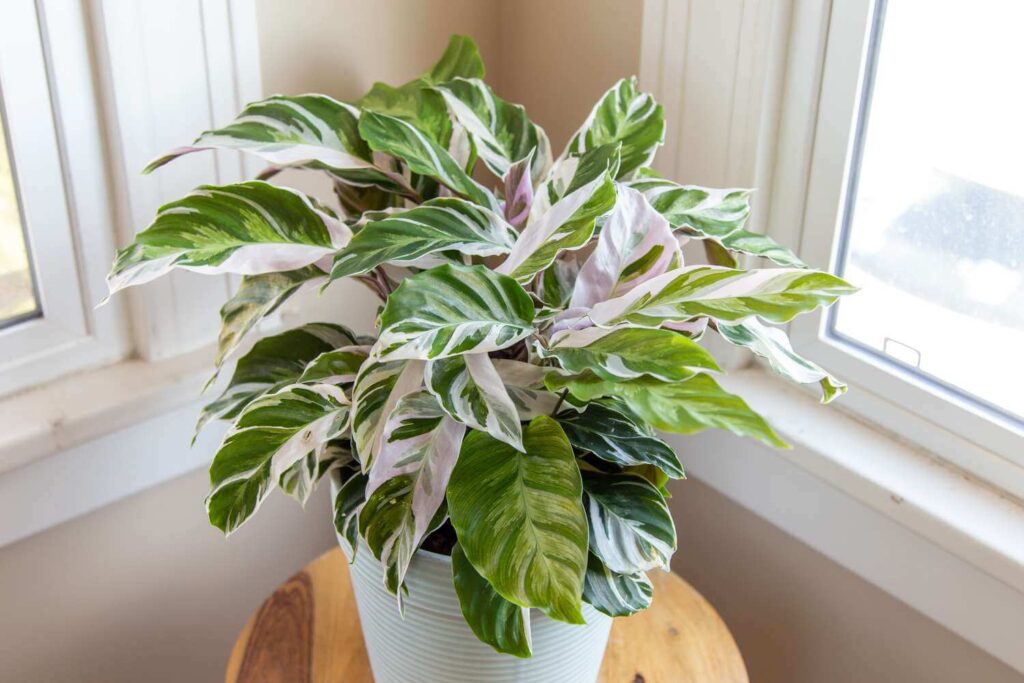
2.8 Calathea Freddie
Compact and suitable for smaller spaces, with rich green leaves and intricate patterns. A charming addition to any collection.
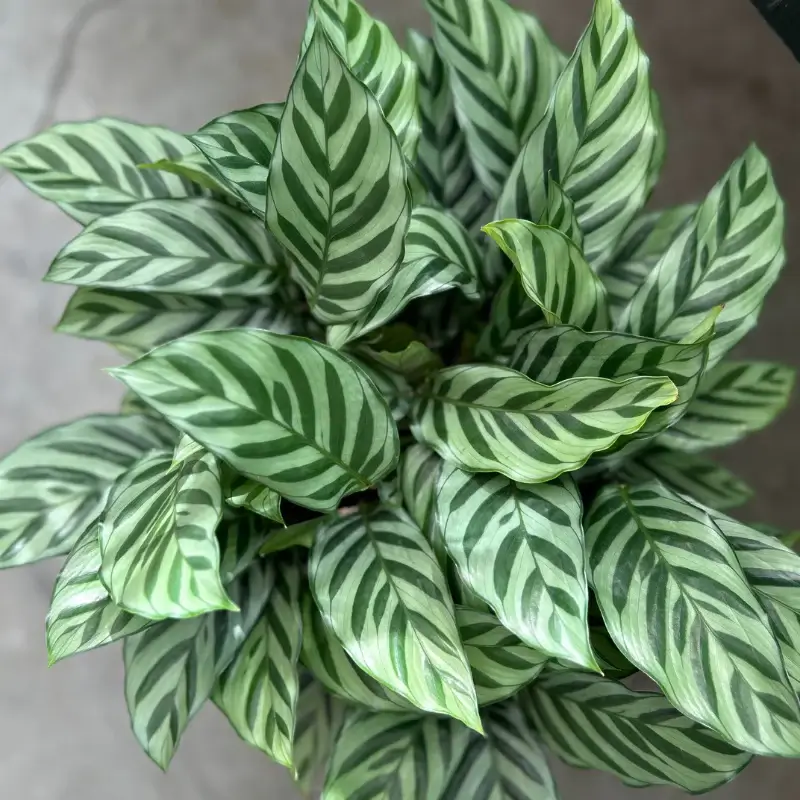
2.9 Calathea Beauty Star
Dark green leaves with white markings that resemble stars, adding a touch of celestial elegance to your indoor garden.
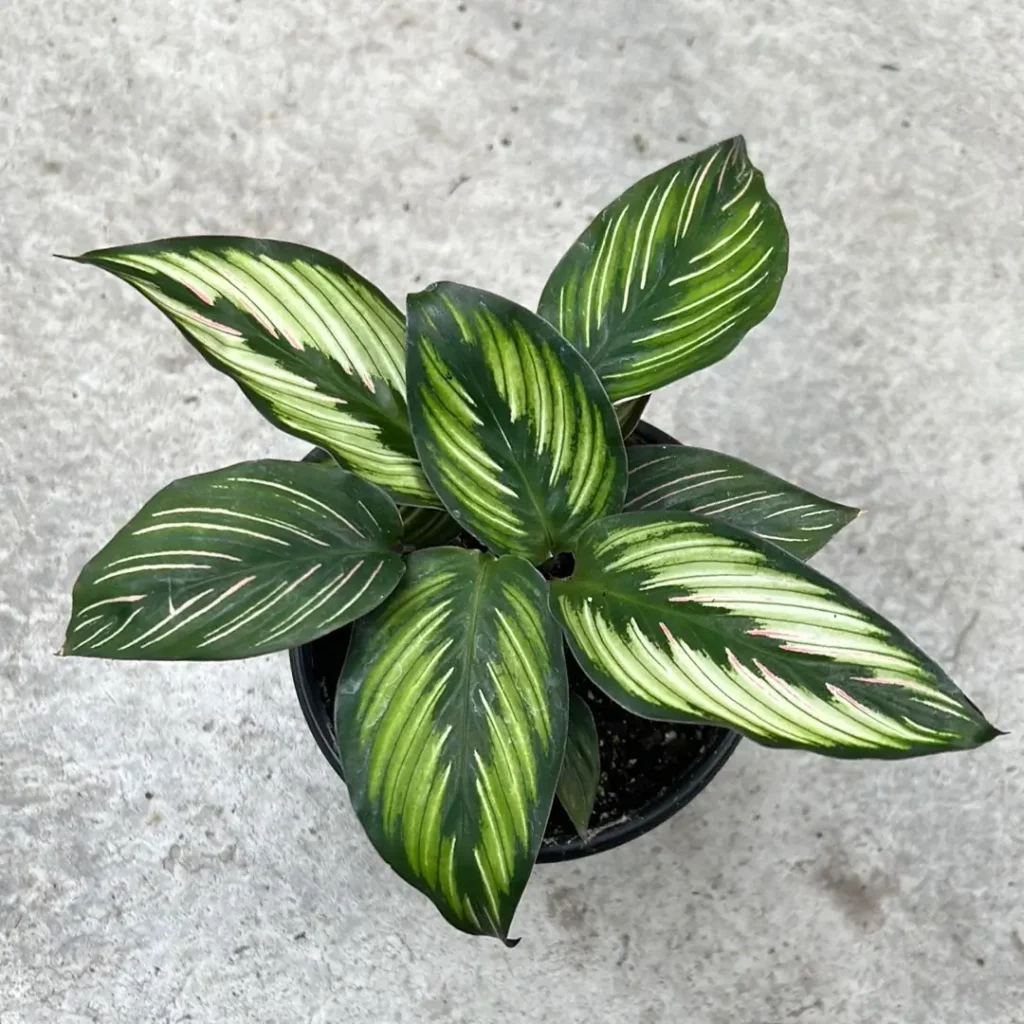
2.10 Calathea Network (Calathea musaica)
Unique mosaic-like patterns on the leaves, create a network effect. A visually intriguing choice for plant enthusiasts.
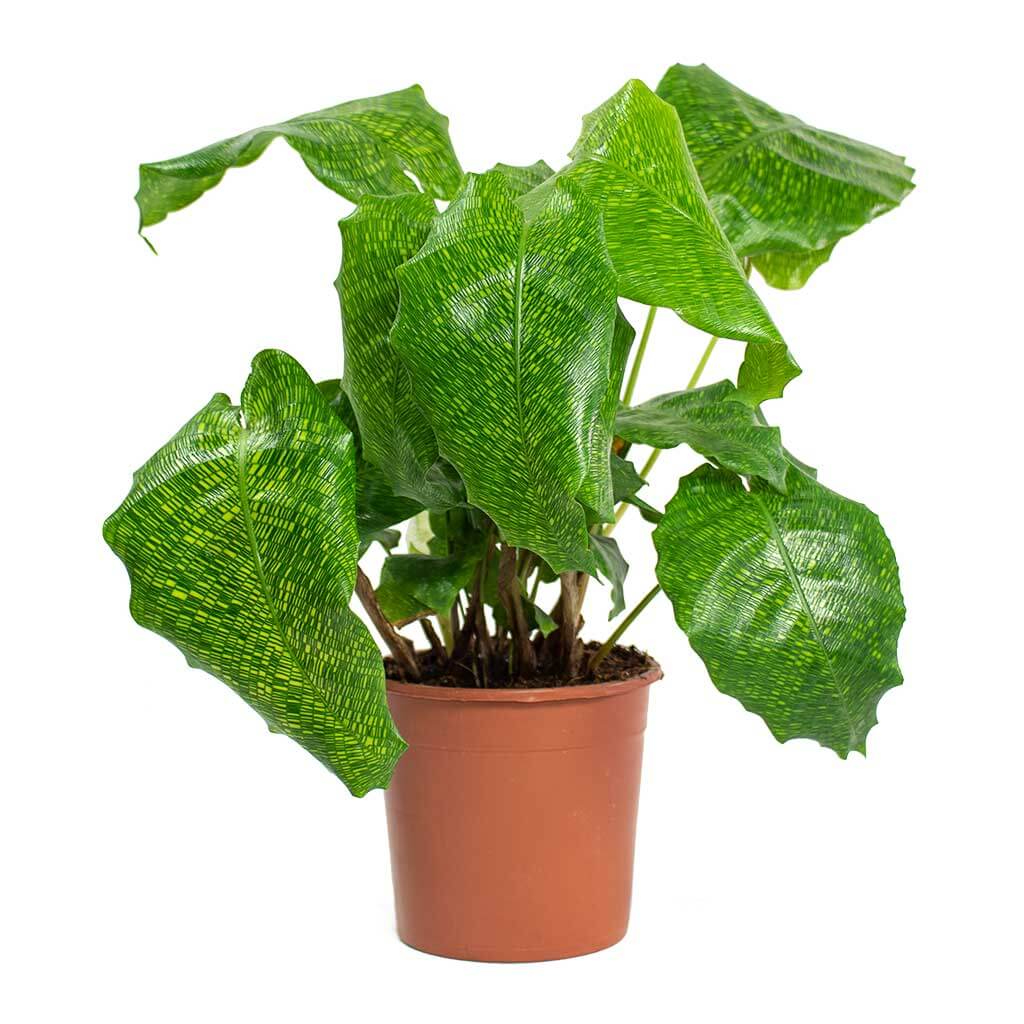
These Calathea varieties offer a range of colors, patterns, and leaf shapes, making them popular choices for indoor gardens and plant collections.
Planting Calathea
Elevate your plant parenting skills by discovering the step-by-step guide on how to grow Calathea, from selecting the right soil to mastering the art of proper watering.
The Calathea’s Requirements For Humidity and Temperature
Understanding the humidity preferences is essential when figuring out how to grow Calathea plants, as they thrive in higher humidity environments. The calathea, being a tropical perennial, necessitates specific considerations regarding humidity and temperature. It thrives in conditions of moderate humidity and heat without excess, making a heated greenhouse an ideal environment. For nurturing calathea indoors in a regular room, placing an air humidifier nearby can be beneficial.
Optimal Soil Conditions For Calathea
Learning how to grow Calathea involves maintaining a consistent watering schedule to keep the soil evenly moist. Well-drained and humus-rich soil is crucial for raising calathea plants. A suitable mixture can be prepared using 1/3 peat or leaf pieces, 1/3 sterilized fibrous potting soil, and 1/3 coarse sand or fine perlite. Alternatively, a ready-made peat-based mixture can be used.
Light Requirements For Calathea
If you’re wondering how to grow Calathea, start by choosing a well-lit spot with indirect sunlight for optimal growth. The calathea flourishes in subdued light or partial shade, making a north-facing window an appropriate location. It should never be exposed to too bright light or direct sunlight, as this can lead to foliage fading.
Maintaining The Ideal Room Temperature
Ensuring an ideal room temperature is crucial for the care and maintenance of calathea, with a range of 16 to 21°C being optimal. During winter, it is advisable to place the plant in an area with temperatures between 13 and 16°C, ensuring it never drops below 10°C. Avoid placing the calathea near radiators or other heat sources.
When To Plant Calathea?
To grow calathea successfully, it is essential to plant in March.
How To Plant Calathea?
Check out a comprehensive guide on how to grow Calathea, covering everything from soil requirements to pest management for healthy and thriving plants.
- Choose the Right Pot:
- Select a pot with a diameter of approximately 10 to 15 cm.
- Ensure the pot has a hole in the bottom for proper drainage.
- For Calathea ornata and Calathea zebrina, consider starting with a larger pot.
- Add Drainage Material:
- Place a layer of clay balls at the bottom of the pot to enhance drainage.
- Prepare Potting Mix:
- Prepare a suitable potting mix, such as a blend of 1/3 peat or leaf pieces, 1/3 sterilized fibrous potting soil, and 1/3 coarse sand or fine perlite.
- Fill Part of the Pot:
- Fill a portion of the pot with the prepared potting mix.
- Place the Plant:
- Position the Calathea plant in the center of the pot, distributing its roots evenly.
- Fill with Potting Soil:
- Add the rest of the potting soil around the plant, ensuring the roots are well-covered.
- Pack and Water:
- Gently pack the soil to secure the plant.
- Water the plant thoroughly, allowing excess water to drain from the bottom.
- Empty the saucer or tray under the pot to prevent water stagnation, which can lead to root rot.
By following these steps, you provide your Calathea with a suitable environment for growth and prevent common issues associated with poor drainage.
Cultivation And Care Of Calathea
Proper care for your Calathea involves the following:
- Watering:
- Abundantly water the Calathea during the growth period, ensuring the rootball remains consistently moist.
- Surrounding the pot with sphagnum moss or moss can help maintain good humidity.
- During rest periods, practice moderate watering. Allow the top 1 cm of soil to dry between waterings.
- Fertilization:
- Apply a very diluted liquid fertilizer for green plants every 15 days during the growth period, from April to September.
- Cleaning:
- Regularly clean the Calathea, as its leaves tend to retain dust.
- Dust the plant once a week using a duster, working from top to bottom and on both sides of the foliage.
- If dust becomes encrusted, use a damp sponge, rinsing it often.
- Repotting:
- Repot your Calathea annually in a larger pot, preferably in June or July.
- This is essential as Calathea tends to deplete its compost quickly.
By following these guidelines, you’ll provide your Calathea with the proper conditions for healthy growth and vibrant foliage.
Diseases, Pests, And Parasites
While Calathea is generally resilient, it’s important to be aware of potential issues:
- Pests:
- Mealybugs may cause sticky leaves, and red spider mites can create webs on the undersides, causing yellowing. Increase humidity and use acaricide for severe infestations.
- Low Humidity:
- Insufficient humidity can lead to drying, browning, or curling of leaves. Improve humidity by placing the plant on a bed of pebbles or damp clay balls and misting its foliage.
- Excessive Light or Nitrogen Deficiency:
- Too much light or a lack of nitrogen can result in pale, withering leaves. Place the plant in partial shade to avoid excessive sunlight and provide regular nitrogen fertilizer.
By addressing these issues promptly, you can help grow your calathea fully and maintain its vibrant appearance. Regular monitoring and appropriate care will contribute to a healthy and beautiful plant.
Propagation Of Calathea-Division Of Tufts
Here’s a step-by-step guide for dividing and propagating Calathea:
- Choose the Right Time:
- Optimal division time is at the end of spring, from June to September.
- Prepare the Plant:
- Water the Calathea a day or two before division to ensure the soil is slightly moist.
- Remove the Plant from the Pot:
- Gently remove the entire plant from its pot.
- Select Sturdy Rhizomes:
- Choose healthy and sturdy rhizomes for division.
- Division Process:
- Use a clean knife to divide the rhizomes, ensuring each division has roots and a few leaves.
- Prepare the Soil:
- Crumble the compost and plant each division in 8 cm diameter pots filled with an ordinary damp mixture.
- Enclose in Plastic Bags:
- Place the pots inside transparent plastic bags.
- Put them in a dark location with a temperature between 16-18°C for at least one week.
- Maintain Humidity:
- Ensure a very humid atmosphere inside the plastic bags to prevent the plants from drying out.
- Root Formation:
- Wait for new roots to form before removing the plastic bags.
- Continue Growth:
- Once the new roots are established, treat the propagated plants like adult Calathea.
- Replant the Divisions:
- Plant each division in a separate pot or the desired locations in the garden.
- Water Thoroughly:
- Water the newly planted divisions thoroughly.
- Provide Care:
- Place the newly divided plants in a suitable location with the right light and humidity conditions.
By following these steps, you can successfully divide and propagate your Calathea, creating new plants for your collection.
Benefits Of Growing Calathea
Calathea plants bring a host of benefits, making them a highly desirable addition to your home. Experiment with different placement options and observe how to grow Calathea successfully in various areas of your home, adapting to their specific needs. Their positive attributes encompass various aspects:
- Air Purification: Calathea plants excel as air purifiers, adept at removing toxins from the air and fostering a healthier living environment.
- Natural Humidifier: Through transpiration, Calathea plants release moisture into the air, acting as a natural humidifier—an especially advantageous feature in dry indoor settings.
- Stress Reduction: The presence of indoor plants, such as Calathea, has been associated with stress reduction and an enhancement of overall mental well-being.
- Enhanced Aesthetics: With their captivating foliage, Calathea plants have the power to elevate the visual appeal of any room, adding a touch of natural beauty.
- Low Maintenance: Calathea plants are known for their ease of care, making them suitable for both novice plant enthusiasts and experienced individuals.
- Improved Focus: The inclusion of a Calathea in your workspace has the potential to boost concentration and productivity, creating an optimal environment for focused tasks.
- Restful Sleep: The rhythmic opening and closing of Calathea leaves contribute to a soothing effect, promoting better sleep quality.
Conclusion
Calathea plants are exceptionally well-suited for indoor environments, making them an ideal choice for those living in apartments or with limited outdoor space. Their adaptability to various interior conditions, coupled with a preference for indirect light, allows them to thrive effortlessly when placed away from direct sunlight.
Incorporating a Calathea plant, whether it’s a Calathea Peacock, Calathea Stromanthe, Calathea Prayer Plant, Calathea Whitestar, or Calathea Burle Marx, into your home offers a multitude of benefits. From their stunning aesthetics to their air-purifying properties and unique habits, these plants contribute to a healthier, more harmonious home environment. Don’t hesitate—bring the beauty and wellness of nature into your home with a captivating Calathea plant today.
Share your experiences with fellow plant enthusiasts and exchange tips on how to grow Calathea effectively, fostering a community of thriving indoor gardens.
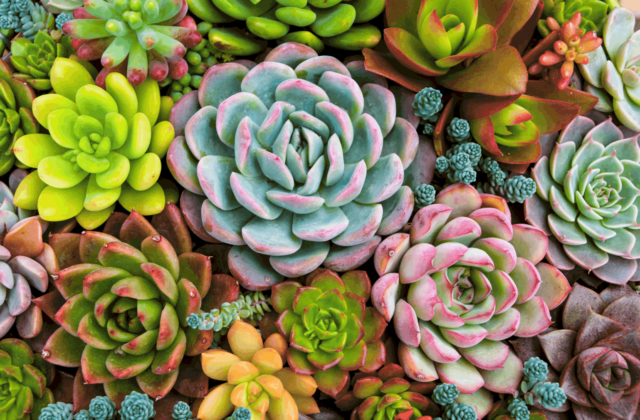
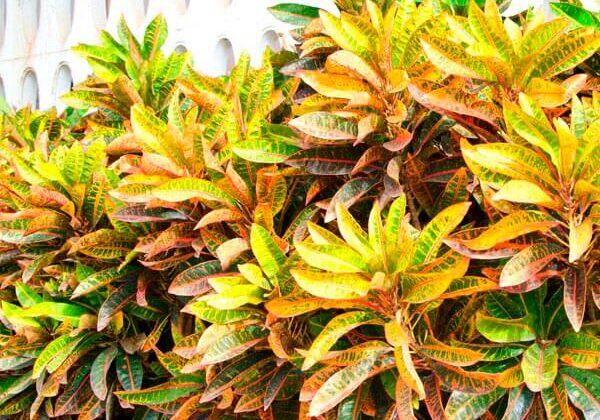
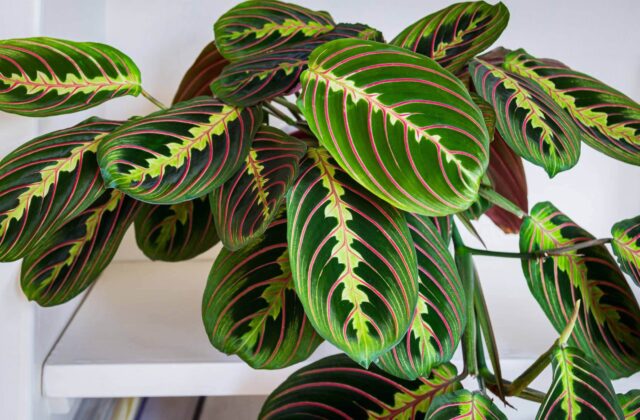
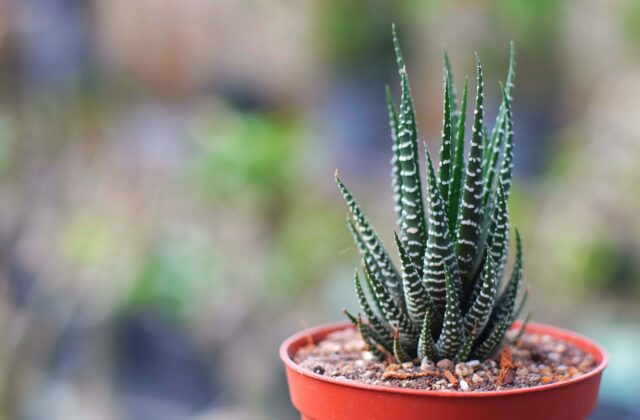
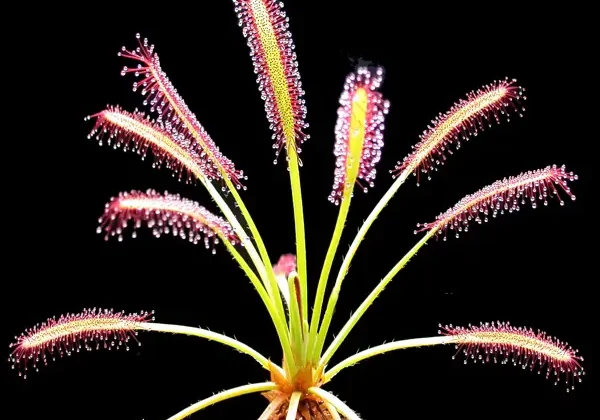
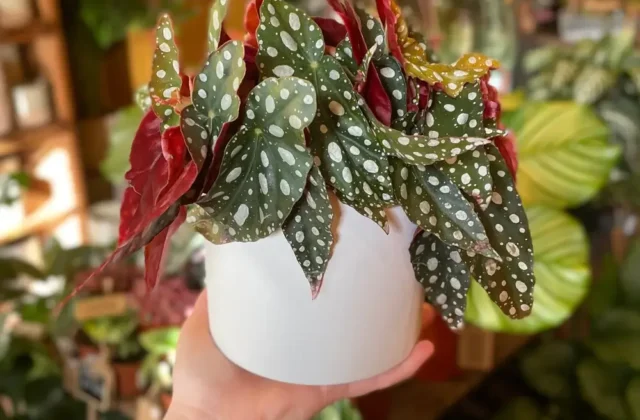
4 comments
Your place is valueble for me. Thanks!…
Very nice design and good subject material, hardly anything else we want : D.
Thank you for sharing your info I truly appreciate your efforts and I am waiting for your next write ups thank you once again
I’ve read much confusing information on this topic and have been disappointed in the content Your article makes this information clear and easy to understand